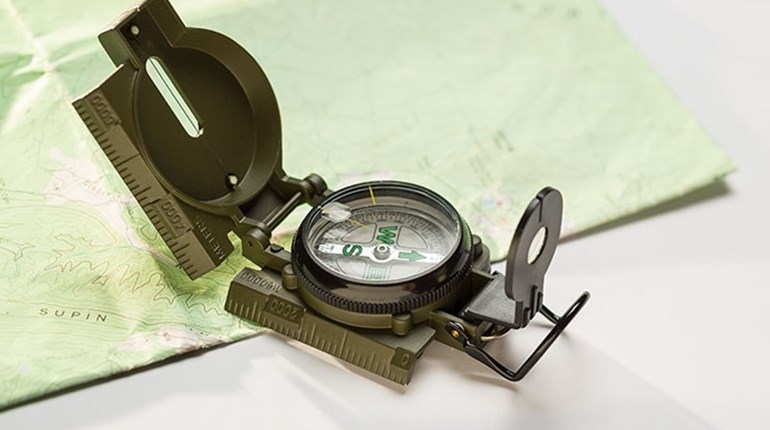
Like it or not, shooting at big game has changed. Evolving technology has created better optics, more accurate firearms and higher performance ammo. It also has fueled a growth in “long-range” shooting. Quite frankly, that’s the part I sometimes don’t like. This focus on long-range shooting at game may encourage people to overstep their skills and their equipment. Just buying the rifle, reading the articles and watching the TV shows does not make you a skilled long-range shooter. You have to earn the skill by burning powder.
You must also understand the potential of your rifle and the ballistics of your cartridge, and the only way to learn is to put a lot of bullets downrange. That’s particularly true with reading the wind, because that’s as much art, learned only by doing, as it is science.
What is long-range hunting? Well, that depends. It’s not a fixed number, say 300, 500 or 1,000 yards, but it factors in many things including the rifle and cartridge you are using.
First is the trajectory. The bullet’s time in flight is a big factor with trajectory. As soon as a bullet leaves the rifle’s bore it starts dropping at a rate of acceleration of 32 feet per second, per second. That means that the longer the bullet is in flight, the faster it is dropping. The bullet is also losing velocity as soon as it exits the barrel. So the longer the range, the slower the bullet is moving. That means it takes more time to cover a specific distance and so the rate of bullet drop over that distance is increased even more. It all compounds—so that the longer the shot, the faster and further the bullet is dropping.
The bottom line is that bullet will drop much more in the last 100 yards of flight than it did in the first 100 yards. Also, the longer the bullet is in flight, the more time the wind has to act on it, so it is moved vertically off the line of sight more and more as the distance increases.
The time in flight will vary with the initial velocity and the bullet’s ballistic coefficient. Ballistic coefficient is simply a measure of how efficient the bullet is at moving through the air. The higher the number, the less velocity the bullet will lose over a given flight. Think of it like a softball versus an arrow: The arrow cuts through the air much better and with less friction or drag than the softball, so it will have a higher ballistic coefficient. If they are both launched at the same initial speed, the arrow will travel much further than the softball before hitting the ground.
So, then, what is long range in terms of trajectory?
Let’s use the .300 Winchester Magnum, one of the best choices for long-range hunting as a baseline for comparison. I think that 500 yards is long range with any rifle when shooting at big game, so let’s work with that distance. With a 200-yard zero and the new Federal Tipped Copper 165-gr. bullet, the .300 Win.’s bullet impacts 36.37 inches below the line of sight at 500 yards.
The new .30 Remington AR is a popular choice for big-game hunting with an AR15 rifle. I recently found myself preparing for an antelope hunt with this rifle. In comparison, that cartridge will have the same point of impact at a little past 400 yards than the .300 Win. has at 500 yards. So, based on bullet drop and my arbitrary base line, “long range” for that cartridge would be 100 yards less than the .300 Win.
As my .30 RAR rifle has a Swarovski Z6 1-6 scope, I went online to the Swarovski Ballistic Calculator and plugged in my data. It said that the first line down from the center in the BTR reticle would be dead-on at 306 yards. I confirmed by shooting at the 300-yardrange that the second line was dead-on. The website listed the first dot on the descending leg of the reticle as the aiming point for a 388-yard shot. My shooting confirmed it at 370 yards, which was where my target was located. Given the variables in accuracy, I believe that the website was correct.
With this ammo, the gun produces three-shot 100-yard groups that average 1.05 inches. At 370 yards, at best, the group sizes are approaching 4 inches. But I was able to hit the center of the target at 370 yards several times.
The bullet will impact 4.4 inches higher at 350 yards than it will at 370 yards, so I know that at 350 yards I need to hold the first dot on the reticle 4.5 inches below where I want to hit.
Notice how fast the bullet is dropping at long range? Almost 4.5 inches in 20 yards. Actually, that’s the bullet’s path relative to the line of sight. The bullet had traveled 256 yards initially before it was 4.4 inches below the line of sight. Yet, in just those 20 yards at longer range it added that amount of drop again. In the next 20 yards 370 to 390 yards, the bullet drops 4.8 more inches from the line of sight.
The actual bullet drop, which is how far the bullet falls from the line of the bore, from 350 to 370 yards, is 5.7 inches. It took 144 yards for the bullet to drop that same 5.7-inch distance at the start of the bullet’s flight. So at the 350 to 370 yard range, the bullet is dropping 7.2 times faster than it was at 144 yards. It all goes to show that the longer the range, the more complicated it becomes to hit the target.
We must also consider the retained energy at long range. The conventional wisdom is that elk and similar game require 2,000 ft-lbs of energy at the target while deer require half that amount. I suppose that the argument could be made that a pronghorn would require 750 ft-lbs of energy, as they are somewhat smaller and more delicate than a deer.
The .30 Remington AR drops below 750 ft-lbs of energy at 380 yards. With the collected data, I decided that 350 yards would be considered my “maximum range” for that cartridge when hunting antelope. While it is fully capable of hitting an antelope at distances further than that, an ethical hunter must consider both retained energy and expected bullet performance as well as the ability to hit the target.
One more thing we must consider with long range hunting is the field accuracy of the rifle and shooter. While the rifle may produce excellent accuracy from a bench rest, what is important is how well you can shoot it under hunting conditions. For the sake of ease let’s assume you can shoot 1.5 minute of angle (MOA) groups with the rifle at 100 yards from a comfortable, prone hunting style position. At 500 yards those groups have opened up to more than 7.5 inches. That is assuming you are shooting perfectly, the antelope is exactly at 500 yards and the wind isn’t blowing. An error of one inch of wobble at 100 yards, which is a few thousandths of an inch of gun movement, opens up your 1.5 inch group to 2.5 inches, still not too bad. But that same wobble at five hundred yards now has your groups at 12.5 inches and you have a wounded antelope.
We are not even including the wind in this equation. With the .30 RAR it takes 8/10th of a second for the bullet to get to the 500-yard target, and even a light 10-mph wind will blow it almost 39 inches off target. At my self-imposed 350-yard range it has a time in flight of almost half a second, and a 10-mph wind will blow the bullet off course by 17.27 inches—more than enough to miss or wound a big-game animal if you misjudge the wind.
If you want to hunt big game at long range, you owe it to the game to be completely competent. That means that you must know the ballistics of your rifle and the hold points in your scope. You must also practice until you can hit a paper plate every single time at the distance you plan to shoot and do it in any weather condition. Once you can do that, you are ready.







































